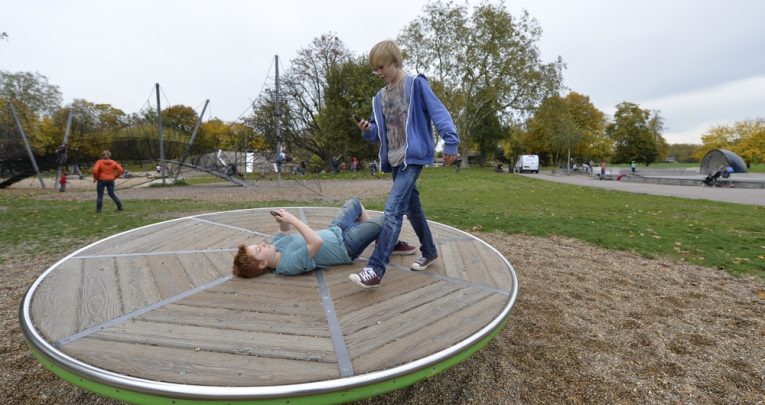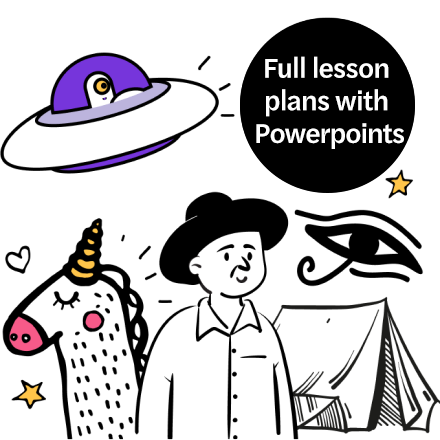Play Time’s Over? Not For Your Secondary Pupils, It Isn’t…

The benefits of play don't disappear as soon as children turn 11, says Ros Harker – so why do we stop giving them the chance to enjoy it?

- by Ros Harker

The benefits of play for children are well documented. It’s a way for them to develop a strong sense of self, and through facing challenge and risk, to nurture their self-confidence and develop physically.
So why is it that all of these essential attributes within personal development are deemed no longer relevant for children over 11? It’s widely recognised that young people develop at different rates, so why is the arbitrary cut-off point for play identified so squarely as the six weeks’ holiday between Y6 and Y7?
Lacking basic skills
There have been great improvements in terms of primary play provision over time, with significant moves towards creating innovative and interesting areas which motivate children to engage and interact with the outdoors.
By contrast, secondary school ‘playgrounds’ are by and large still of the bleak tarmacked variety, with little notable advancement over the past 40 years.
Increasing use of screens, computers, iPads, phones and tablets (combined with a reduction in free access to the outdoors due to perceived ‘stranger danger’ and traffic risks) has led to an underdevelopment in children’s physical literacy – the development of fundamental movement skills required for later life.
Typically, these would have been fully developed during and alongside early years and primary education, but there is growing evidence that young people entering secondary schools lack basic skills such as balancing, coordination and agility.
Baroness Campbell, Chair of UK Sport, has previously noted that, ‘Some secondary school teachers have 11-year-old pupils who hardly move, let alone catch or run. They can’t catch, throw, jump or run – the fundamental basic movements of every sport.’
Natural engagement Bernard Spiegal is the principal of PLAYLINK – a multi-disciplinary practice focused on securing children and teenagers’ freedom to play. “Organised games and sports are typically understood and valued within the secondary school setting, but will only appeal to a certain kind of child, not the majority,’ he explains.
‘In many ways, school grounds are designed exclusively to accommodate these forms of activity. There is a general assumption that play is for young children, and as such it is not even on the radar for many secondary schools.’
‘I would assert that teenagers and older children do engage in play of various sorts, but a significant amount of work is required to understand the dynamics. Too often overlooked is the value of play’s informal, unplanned nature, quite distinct from sport and planned activities.
‘To that extent, play is a medium through which children and teenagers learn how to ‘rub along’ with each other, and to negotiate potentially conflicting wishes for themselves.
It needs to be said, however, that many schools could find it difficult to value the ‘informal’ and ‘unplanned’, since this way of engaging with the world and each other is seen as counter-cultural to current notions of schools’ purpose and practice.’
//crosshead// Well-developed playgrounds can offer some stimulation to motivate children to explore their boundaries, developing key skills in physical literacy.
There have been several studies looking at the correlation between innovative and exciting play areas and increased physical activities in secondary age pupils. A pioneering new programme by Grounds for Learning builds on this existing research and seeks to explore this issue further, to understand better how older children and teenagers need to play.
‘Many of the schools I have visited were very aware of the room for improvement,’ says training and development officer, Matt Robinson, ‘but had been unable to address the shortcomings for a combination of reasons – chiefly lack of funds and lack of manpower.
‘We also came across a few schools which had good play spaces where play naturally occurs, rather than something that is championed by policy or leadership.’
Investment for all
Young people’s requirements change greatly between the ages of 11 and 16, so the real challenge is to create a space that works for everyone; motivating young people to engage in the space physically, but also providing opportunities for social interaction and relaxing.
It’s wise to take things slowly in the first instance; embracing a shift in mind-set and culture amongst the school community is key. At the outset, everyone wants to see big structural changes in landscapes, but these may not initially be in the best interest of the school – each school is different, so the process takes time.
It’s far better to instead engage with all members of the school community – pupils, staff and parents – to create outdoor provision that will be effective and sustainable over the longer term.
It is encouraging that play within secondary schools has started to appear on the agenda. A concerted effort is now needed further to aid a greater appreciation of this complex issue.
Play providers are very knowledgeable about how high energy and challenging equipment may appeal to teenagers and engage their physicality, but there is plenty more to be done in terms of understanding the very different needs of different children. A one-size-fits-all approach will not suffice, and young people’s social requirements need to be given serious consideration in order to make any investment in outdoor provision a success.
Ros Harker is business manager at Playgarden, a landscape led play company that specialises in the Education sector










